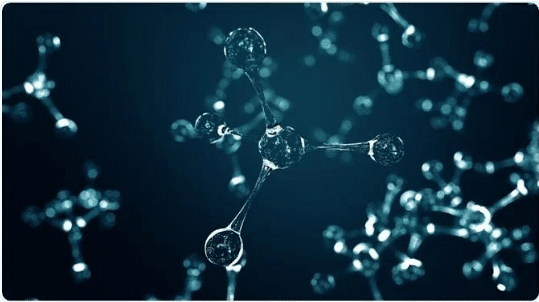Introduction
Haptens are small sized molecules that are not capable of evoking an immune response in a solitary state. They elicit an immunogenic reaction only when they affix themselves to a large carrier molecule.
When were haptens discovered?
Haptens were first delineated in the year 1930 by Karl Landsteiner, an Austrian biologist, immunologist, and physician. He unveiled that an organic compound such as m-aminobenzene sulfonate can only generate an immunogenic reaction when they bind with a large carrier molecule, for instance an ovalbumin.
Haptens induce immunogenic response only in the presence of a carrier molecule
The moniker ‘Hapten’ comes from the Greek word ‘Haptein’ which means ‘To Fasten’. Karl Landsteiner used this prodigy of haptens to understand the antigen-antibody binding principle. Latterly, this epitome of haptens is being used in medicine research to produce vaccines against communicable diseases.
Effect of carrier on hapten
Some proteins that are used as standard carrier molecules include keyhole limpet hemocyanin(KLH), bovine serum albumin(BSA) and ovalbumin(OVA).
KLH , BSA, and OVA are standard carrier protein molecules.
The bond shared between a hapten and a carrier molecule is usually a covalent bond. Once the hapten-carrier conjugate is formed, a cascade of signals is triggered within the complex which makes the hapten to cause immunogenic reactions by releasing anti-hapten antibodies.
When an individual is exposed to the hapten for the first time, anti-hapten antibodies are released; on second exposure, antibody elicits an immune response in the absence of a carrier
When the individual gets exposed to the haptens for the second time, these anti-hapten antibodies recognize the hapten and are capable of binding to it without the help of a carrier molecule. As such thought haptens require a carrier molecule to elicit an immune response, the presence of anti-hapten antibodies from the first exposure aids the immune system to recognize the same hapten with the unavailability of the carrier molecule during the second exposure.
Local environment hypothesis and Cooperative hypothesis are the two theories which explain the effect of carrier molecules.
Carrier effect can be simplified by two theories namely:
- Local environment hypothesis: The secondary response stimulated by antigen(Ag) receptors that recognize the hapten on a large carrier molecule with an adjoining conformation.
- Cooperation hypothesis: The two receptors–The receptor for hapten which was dilatorily released as an antibody(Ab) and an arcane receptor for the carrier; collectively apprehended the antigen(Ag).
Immunogenic response by hapten
Haptens alone cannot trigger an immunogenic reaction in an individual, that is, they combine with blood serum proteins such as albumin and if the formed conjoin(hapten-albumin complex) has inordinate molecular weight(MW) of around 3,000 MW, the hapten becomes capable of evoking an immune response.
Other haptens combine with cell membranes like red blood cells(RBCs) and form a ‘neo-antigen’ complex. The onset of an immunogenic reaction then leads to haemolytic anaemia.
Haptens as antibiotics and anaesthetics
As mentioned before, haptens are small molecules and require a carrier molecule to bind with to elicit an immune response. As such, haptens can act as pharmaceutical drugs that attach to blood proteins. As a result, an immunogenic response is evoked to the drugs which causes anaphylactic shocks or skin eruptions in some serious cases.
Anaesthetics
Anaesthetic ether was discovered in the year 1846, but the use of ether anaesthetics is now archaic as it is highly inflammable and irreconcilable with modern anaesthetic and surgical methodologies. But pioneering research on aesthetics led to the development of halothane anaesthetic; it is a formidable, non-flammable and volatile drug that was introduced in 1955. Halothane anaesthetics are imbibed to trifluoroacetyl chloride which reacts with liver proteins and forms a neo-antigen; the immune system then evokes an immunogenic response to the neo-antigen, and the vulnerability of the halothane to immune system results in the liver inflammation.
Antibiotics
Penicillin is considered as a true antibiotic as it prevents the bacteria in the synthesizing of the cell wall. It was discovered in 1928. Penicillin acquires its antibacterial properties from a beta-lactam core. When penicillin as a hapten is exposed to the subsequent immunogenic reactions, instead of eliciting an immune response, it breaks down and produces benzylpenicilloyl derivatives. These derivatives later combine with various proteins to trigger an immune reaction in an individual. As such unpropitious immune-mediated reactions such as angioedema, urticaria, asthma and anaphylaxis(in severe cases) can be observed. For instance: Cephalosporins are known to create unpromising immune-mediated reactions; especially fourth generation Cephalosporins.
Conclusion
Haptens are partial antigens meaning they cannot elicit an immune response unless and until they annex themselves to a large carrier molecule. Hapten-carrier conjugations are bound to each other by a covalent bond. The hapten-carrier complex thus formed releases anti-hapten antibodies. When the individual gets hapten exposure for a second time, the immune system of a person recognizes the same hapten and briskly attacks the hapten molecule–which in turn triggers an immune response of an individual. The inducement of haptens as partial antigens marks their use as pharmaceutical drugs namely: hapten antibiotics(penicillin) and hapten anaesthetics(cephalosporin).
Mohammad Reshma
March 19, 2022








